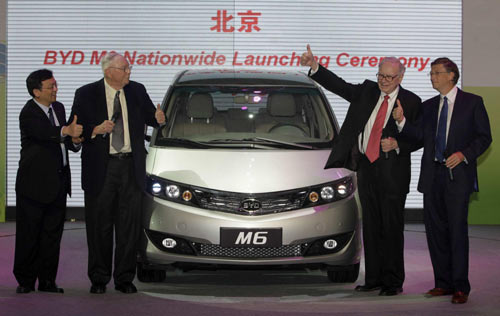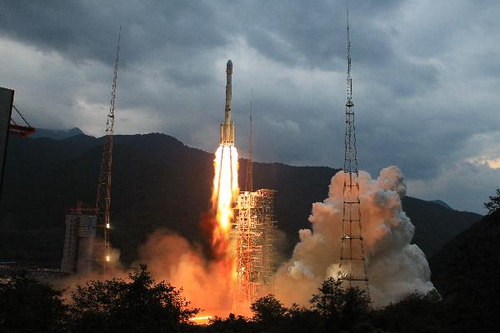... We don't need Chinese crap. ...
The Chinese don't make as much "crap" as they once did. They now mainly make higher value added*, high tech stuff, such as digital camera, iPads, modern cars, internet support systems, computers Li-ion batteries, Rare Earth magnets, etc. Also better stuff for their military and science efforts. For example, just a couple of days ago they launched their second moon orbiting survey rocket. (The first launched about three years ago did orbit the moon for more than a year and collected data for choosing the site of their maned lander to be launched in a few years.)
* They had to move up on the value added chain and import many components from others who still have cheap labor. In China REAL wages are rapidly rising. - Nearly 20% per year for the coastal areas and still there is a labor shortage. For example, FoxComm, world's largest maker of electronic devices like the iPad, has raised wages about 30% or more, greatly improved the provided living quarters, is giving more vacation time, medical assistance, better food in the companies cafeterias and still cannot get all the workers it needs, so has move two factories to the interior when cheaper labor is still available.
You are speaking of an older China, which no longer exist.
Chang'e-2 entered the orbit with a perigee of 200 kilometers and apogee of 380,000 kilometers as scheduled. There it separated from the carrier rocket. It was the first time that a Chinese lunar probe directly entered the earth-moon transfer orbit without orbiting the earth first.
"It is a major breakthrough of the rocket design, as it saves energy used by the satellite and speeds up the journey to the lunar orbit," said Pang Zhihao, a researcher with the China Academy of Space Technology. The lunar satellite is expected to take about 112 hours, or almost five days, to arrive at its lunar orbit, faster than the 12 days taken by the Chang'e-1 three years ago.
"It travels faster and closer to the moon, and it will capture clear pictures," Wu said. Chang'e-2, named after a legendary Chinese goddess of moon, will orbit 100 kilometers above the moon, compared with 200 kilometers for Chang'e-1. Total expenditure for the Chang'e-2 mission is about 900 million yuan ($134.33 million).
China launched its first lunar probe, Chang'e-1, in October 2007, marking a milestone in the country's space exploration. After orbiting for 494 days and intentionally crashing onto the lunar surface, Chang'e-1 sent back 1.37 terabytes of data, producing China's first complete moon picture. The data has been shared with other countries for free.



